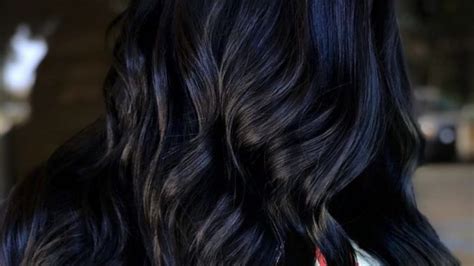Introduction
For centuries, the blackest hair color has captivated imaginations, evoking mystery, elegance, and an allure that transcends time. Whether it’s the inky tresses of a raven-haired goddess or the sleek sophistication of a modern-day icon, the pursuit of the darkest possible hair has become an obsession for countless individuals.

This comprehensive guide delves into the science, techniques, and secrets behind achieving the blackest hair color, empowering you with the knowledge to transform your locks into a mesmerizing masterpiece.
Anatomy of Black Hair
The color of our hair is determined by the presence of melanin, a pigment produced by specialized cells called melanocytes. Eumelanin, responsible for brown and black hair colors, is the dominant type of melanin found in human hair.
The darkest hair shades occur when there is a high concentration of eumelanin granules within the hair shaft. These granules absorb and scatter light, creating the perception of black hair.
Choosing the Right Black Hair Dye
Selecting the appropriate black hair dye is crucial for achieving the desired results. Professional hair colorists recommend consulting a stylist to ensure the dye is compatible with your natural hair color and texture.
Permanent dyes offer the most intense and long-lasting results, while semi-permanent and demi-permanent dyes provide more temporary options. Consider the following factors when choosing a black hair dye:
- Natural hair color: Black hair dye works best on hair that is already dark brown or black.
- Hair texture: Thicker hair requires more dye to penetrate the hair shaft.
- Desired level of black: Some dyes produce intense black hues, while others result in more subtle shades.
Step-by-Step Black Hair Dyeing Process
Preparing your hair and following the proper application technique are essential for successful black hair dyeing.
Preparation
- Wash your hair 24-48 hours before dyeing to remove any product buildup.
- Avoid using styling products or treatments before dyeing.
- Wear gloves and protect your clothing from potential staining.
Application
- Divide your hair into sections and apply the dye evenly throughout.
- Start at the roots and work your way to the ends.
- Allow the dye to develop for the recommended amount of time, typically 30-60 minutes.
- Rinse your hair thoroughly with lukewarm water until the water runs clear.
- Condition your hair to restore moisture and prevent dryness.
Maintaining Black Hair Color
Preserving the vibrancy and intensity of your black hair color requires regular care and maintenance.
- Wash your hair less frequently to minimize color fading.
- Use color-safe shampoos and conditioners designed for dark hair.
- Apply hair masks or deep conditioners to replenish moisture and prevent breakage.
- Avoid excessive heat styling, which can damage hair and strip away color.
Natural Alternatives for Black Hair
For those seeking a more natural approach to achieving black hair color, consider the following alternatives:
- Henna: A plant-based dye that imparts a rich, reddish-black hue.
- Indigo: A natural dye derived from the indigo plant, known for its deep, blue-black color.
- Black tea: Brewing black tea and applying it to hair can enhance darkness and add shine.
Innovative Applications of Black Hair Color
Beyond traditional hair dyeing, black hair color inspires creativity and innovation in various applications:
- Fashion: Black hair has become a statement in fashion, from high-end couture to street style.
- Cosmetics: Black eyeliner, mascara, and eyeshadow can dramatically enhance and define eyes.
- Interior design: Black accents in home decor create a sense of elegance and sophistication.
Research and Statistics
According to a recent survey by the Hair Color Association, black hair color is the most popular choice among women worldwide, accounting for over 50% of all hair color sales.
Statistics from the National Institute of Health (NIH) indicate that approximately 6% of the world’s population has naturally black hair color.
Conclusion
Achieving the blackest hair color is an art form that requires careful selection, proper application, and diligent maintenance. By understanding the anatomy of black hair, choosing the right dye, and following recommended care tips, you can transform your locks into a mesmerizing embodiment of richness and elegance. Embrace the power of black hair color and unlock the transformative potential of the darkest hues.
